Click here to read an original op-ed from the TED speaker who inspired this post and watch the TEDTalk below.
Remember the tag line for the 1979 sci-fi flick Alien? It was boldly emblazoned on the film's advertising posters, and helpfully informed the public that "in space, no one can hear you scream."
Well, of course that's true; at least if you're floating around without your protective helmet and its built-in walkie-talkie. But then again if you're bare-headed in space, the fact that no one can hear the noises you're making is scarcely your biggest problem.
Nonetheless, there's a widespread perception that space -- which after all, is mostly air-free -- is as silent as the shadows.
Honor Harger, an artist and technologist from New Zealand, begs to differ. In her entertaining 2011 TEDTalk, she notes that the cosmos is replete with noise, from the roar of a solar storm to the relentless clicks of a pulsar to the dull thrum of the Big Bang's remnant glow. Her presentation suggests that if we could only escape the acoustic buffer of our atmosphere and surmount the softening powers of distance, we would confront a universe throbbing with sound.
Not exactly.
Virtually every one of the sounds Harger offers for our amusement and wonder are actually not sounds in the usual sense at all. They're electromagnetic noise, converted by electronic devices (you know them as radio receivers) into signals that -- when played through a loudspeaker -- become the atmospheric pressure waves we call sound. It's a translation of one type of phenomenon (radio static) into another (acoustic static).
That's akin to the "sounds" of the aurora borealis, which are available for your listening pleasure on YouTube and elsewhere. Once again, these are really electromagnetic waves converted into peals and squeals with a radio receiver. If you were to actually hie yourself up to Fairbanks this winter to watch these shimmering celestial curtains, the only sound you'd hear is that of your toes, as they freeze up and crack off.
On Mars, where the air is spare -- a hundred times less dense than on Earth -- someone could hear you scream. But you'd have to really strain to get anyone's attention. On the Red Planet, where the wind is high-pitched and faint, even a symphony orchestra will sound as thin as cheap gruel.- Seth Shostak
But in all fairness, there is some audio action in space. To begin with, any world with an atmosphere will have sound in the usual sense. On Mars, where the air is spare -- a hundred times less dense than on Earth -- someone could hear you scream. But you'd have to really strain to get anyone's attention. On the Red Planet, where the wind is high-pitched and faint, even a symphony orchestra will sound as thin as cheap gruel.
More generally, sound is really just another name for pressure waves, and those can propagate through solids (try putting your ear to a railroad track) or liquids (try putting your ear to a tank of whales). So planets will have sounds, whether or not they have inhabitants to enjoy them.
But here's an example of sound in a less familiar setting: the Sun. Of course, Sol is a big ball of hot gas, but one that -- thanks to its endlessly boiling innards -- shakes and vibrates. By studying patterns on the Sun's surface, astronomers can learn much about Sol's internal construction. Imagine, if you will, hauling that old drum set from the garage, putting a dusting of sand on the head of one of the snares, and giving it a gentle poke. You'll see the sand arrange itself into interesting patterns, dependent on the tension of the drum head, its dimensions, etc. Studying Sol's interior by looking for analogous patterns on its incandescent face is known as helioseismology, an active -- if largely unpronounceable -- research area that uses sound as a probe of our home star.
A similar trick is used to study the left-over glow of the Big Bang -- what's known to cosmologists as the 3-degree background. The dull roar that Harger plays during her TEDTalk is the radio noise from this ancient event, produced when the universe was small and hot. But telescopes in space have found slight variations to this glow -- irregularities due to pressure waves that were rumbling through the universe a very short moment after the Big Bang banged. These are, indeed, the very earliest sounds -- the low-frequency groans of cosmic birth. Sorting out these primordial sounds is difficult, but they could hold the key to understanding the first, critically influential moments of our universe.
It's nice to think of the heavens swaying to a symphony of sound -- an idea that, after all, is reminiscent of the medieval "music of the spheres." In fact, the overwhelming bulk of the cosmos is deathly quiet. But here and there -- on worlds where matter is thick and conditions are right -- noises are commonplace. And in some cases, these noisy worlds may ring with the sounds of life -- the bleats and bellows of creatures we have never seen, but may someday discover.
Ideas are not set in stone. When exposed to thoughtful people, they morph and adapt into their most potent form. TEDWeekends will highlight some of today's most intriguing ideas and allow them to develop in real time through your voice! Tweet #TEDWeekends to share your perspective or email tedweekends@huffingtonpost.com to learn about future weekend's ideas to contribute as a writer.
